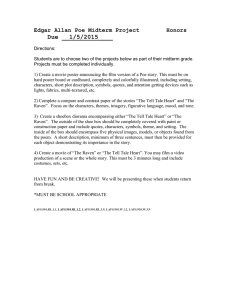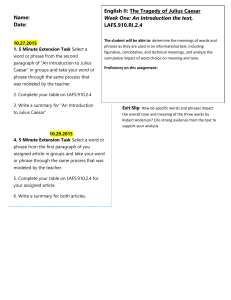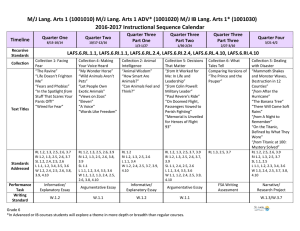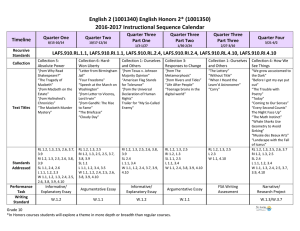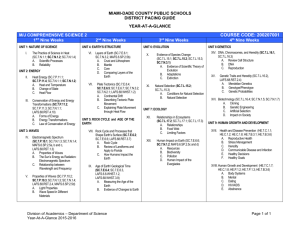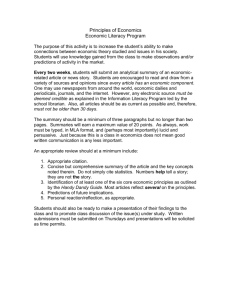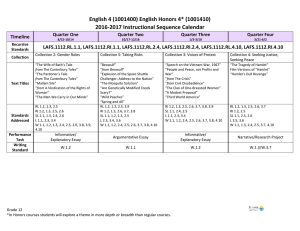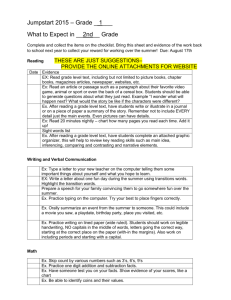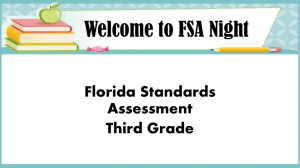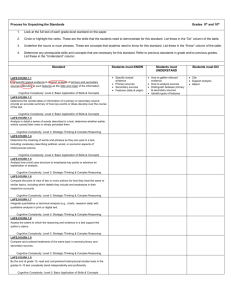High School - the School District of Palm Beach County
advertisement
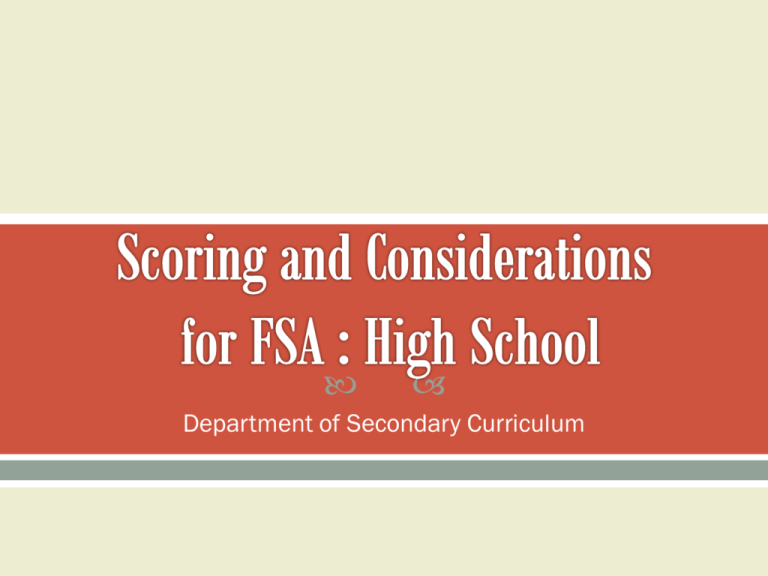
Department of Secondary Curriculum Updates Language Test Arts Florida Standards (LAFS) Specifications for Florida Standards Assessment (FSA) and FSA Writing Scoring of Palm Beach Performance Assessments and FSA Writing Best Practices for Administrators Economics with Financial Literacy o All Economics courses, including AP, AICE, and IB will need to include financial literacy. o Resources and PD will be provide to all Economics teachers during preschool. o We can offer dual enrollment Economics this year. 30% rule for EOC courses has changed. o The 30% must be applied to the full year course and grade, not just the second semester. Gender Equity Corrective Action Plan LA.910.1.6.3 The student will use context clues to determine meanings of unfamiliar words LAFS.910.RL.2.4 Determine the meaning of words and phrases as they are used in the text, including figurative and connotative meanings; analyze the cumulative impact of specific word choices on meaning and tone (e.g., how the language evokes a sense of time and place; how it sets a formal or informal tone). LAFS.910.RH.2.4 Determine the meaning of words and phrases as they are used in a text, including vocabulary describing political, social, or economic aspects of history/social science. Though this may assess one vocabulary standard, it also assesses reading comprehension and author’s purpose. LA.910.2.1.2 The student will analyze and compare a variety of traditional, classical, and contemporary literary works, and identify the literary elements of each (e.g., setting, plot, characterization, conflict). LAFS.910.RL.2.5 Analyze how an author’s choices concerning how to structure a text, order events within it (e.g., parallel plots), and manipulate time (e.g., pacing, flashbacks) create such effects as mystery, tension, or surprise. LAFS.910.RL.3.7 Analyze the representation of a subject or a key scene in two different artistic mediums, including what is emphasized or absent in each treatment (e.g., Auden’s “Musée des Beaux Arts” and Breughel’s Landscape with the Fall of Icarus). Select 4 out of 8 sentences and arrange them in order to create a summary. Part A and Part B Questionsstudents have to explain how they determined the answer. Questions might have more than one correct answer. Complete a diagram by dragging and dropping options. LA.910.4.2.1: The student will write in a variety of informational/expository forms, including a variety of technical documents (e.g., how-to-manuals, procedures, assembly directions). LAFS.910.W.1.2: Write informative/explanatory texts to examine and convey complex ideas, concepts, and information clearly and accurately through the effective selection, organization, and analysis of content. a. Introduce a topic; organize complex ideas, concepts, and information to make important connections and distinctions; include formatting (e.g., headings), graphics (e.g., figures, tables), and multimedia when useful to aiding comprehension. b. Develop the topic with well-chosen, relevant, and sufficient facts, extended definitions, concrete details, quotations, or other information and examples appropriate to the audience’s knowledge of the topic. c. Use appropriate and varied transitions to link the major sections of the text, create cohesion, and clarify the relationships among complex ideas and concepts. d. Use precise language and domain-specific vocabulary to manage the complexity of the topic. e. Establish and maintain a formal style and objective tone while attending to the norms and conventions of the discipline in which they are writing. f. Provide a concluding statement or section that follows from and supports the information or explanation presented (e.g., articulating implications or the significance of the topic). Writing to Explain (Expository) Writing Situation: Suppose you are a reporter and have been assigned to interview a fascinating person of your choice. Directions for Writing: Think about a person you would choose to interview. Now write to explain why you would choose to interview this person. Test specifications: students will receive 2-4 texts with a combined word count of: Grade 9: 1100-1900 words Grade 10: 1100-2000 words Grade 11: 1100-2000 words The materials in the HMH (language arts classrooms) and reading adoption were designed to meet the rigor of the new standards and assessments. o It is imperative teachers adapt to the new resources and materials. Doing what we’ve always done will not be successful. Teaching and assessing benchmarks in isolation will not prepare students. All forms of literacy will need to be taught. o Visual literacy o Speaking and listening o Traditional and non-traditional text Learning Village will be the portal for providing teachers with resources and lesson plans. Professional development will be crucial. With a few exceptions, professional development will be school-based. Each school will be assigned a resource teacher and specialist who can provide modeling, small group PD (done during common planning, before or after school, etc.), full staff PD, etc. District-wide professional development opportunities: • • • • HMH Day 1 (resources) HMH Day 2 (best practices) Reading Practices FSA Writing Scoring Have teachers review the training tests. Monitor Palm Beach Performance Assessments o The data is only as good as the scoring. o Provide time for teachers to collaborate to score and design lessons. Create a school-wide policy for grammar. o Non-negotiables may be use of complete sentences with capitals and end punctuation. o Editing will be a portion of the reading/language exam. Look for an integration of literacy practices in all content areas. Check for student-centered learning in addition to direct instruction. o Study from SCOPE (Stanford Center for Opportunity Policy in Education) found that student-centered practices increase engagement and academic achievement (January 2014).
